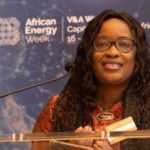
Determining cost-effectiveness of green buildings

By Ruan Bestbier
Bank Windhoek Treasury Sales and Sustainability Analyst.
As the effects of climate change continue to emerge as a business reality, the local banking sector plays a vital role in accelerating the local market’s transition to a lower-carbon energy future.
A Green Building, also known as green construction or sustainable building, is the practice of creating structures and using processes that are environmentally responsible and resource-efficient throughout a building’s life-cycle.
Building green brings together a vast array of practices and techniques to reduce and ultimately eliminate the impacts of buildings on the environment and human health. Therefore, green buildings play a vital role in addressing the environmental concerns as traditional buildings contribute to carbon emissions, waste disposal and energy use. Although green buildings are regarded as the future, there is a perception, even amongst experts in the property sector that the upfront costs of building green are substantially higher when compared to building conventional, which limits the construction of green buildings.
According to the World Green Building Council, green buildings offer a number of economic or financial benefits, which includes and are not limited to cost savings on utility bills for tenants or households – through energy and water efficiency; lower construction costs and higher property value for building developers; increased occupancy rates or operating costs for building owners; and much needed job creation.
The increased demand for green buildings in the local economy, should enable the building and construction sector to create an increasing demand for a skilled and trained workforce. This expected jobs growth stems from a growing need for buildings that can cope with multiple challenges such as meeting tough climate-change targets, rising energy costs, water shortages and an increased risk of extreme weather conditions (i.e. severe drought we are experiencing, currently).
The building and construction sector could also play a significant role in achieving many of the United Nations Sustainable Development Goals (SDGs), and the Paris Agreement’s goal of limiting global warming to well below 2°C.
According to the International Finance Corporation (IFC), a building that utilises at least 20% less energy, water and material, compared to an equivalent local benchmark and where this can be quickly and transparently demonstrated, is considered a Green Building. For the purpose of determining technical solutions and metrics of Green Buildings, various software can be used.
In the case of the IFC, EDGE software was developed. The software tool for green buildings that enables the user to determine the ideal technical solutions to reduce environmental impacts while capturing upfront costs and projected operational savings.
EDGE ensures that a building achieves 20% efficiencies in energy, water, and material consumption, defining a much-needed universal green standard. EDGE certified projects would also qualify as green bond projects.
While the drivers behind EDGE are financial, the results are environmental, and EDGE helps mitigate climate change by encouraging sustainable development (IFC, 2018). The IFC developed EDGE application helps to determine the most cost-effective options for designing green within a local climate context.
It is therefore evident that green buildings bring multiple benefits and does not have to be costly.
Bank Windhoek collaborated with IFC to develop their green bond framework for the Green Bond that was issued during December 2018.
The Bank obtained additional sources of funding for its green lending activities by raising funds in the debt market through a local Green Bond issuance, of which the proceeds will be used solely to finance eligible green projects and assets throughout the country.













































